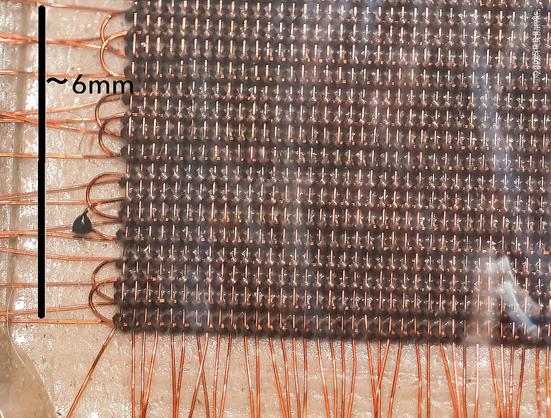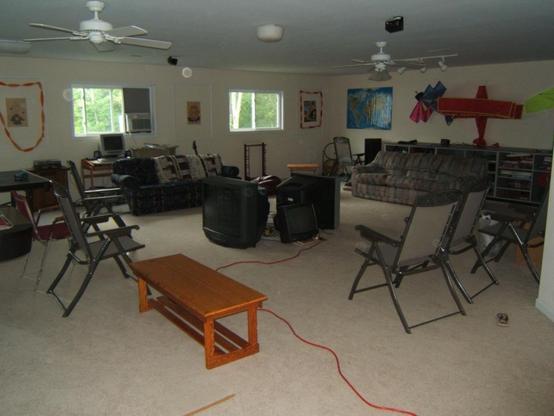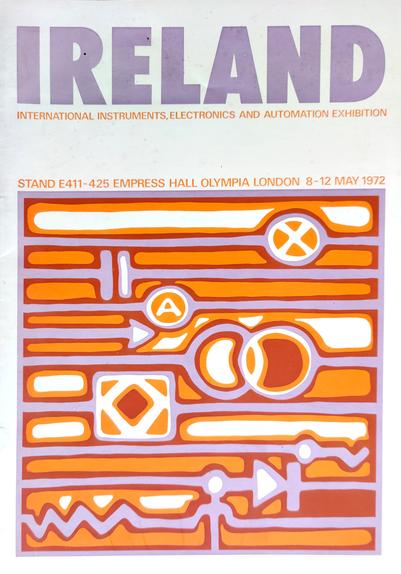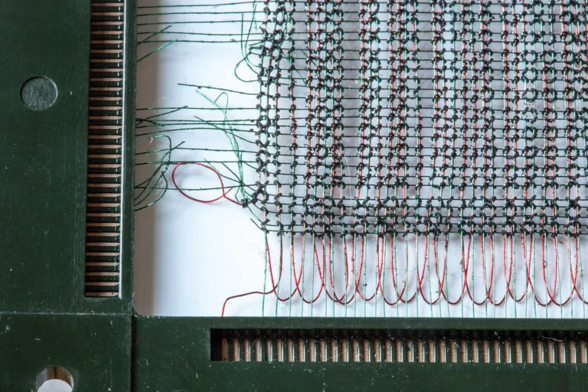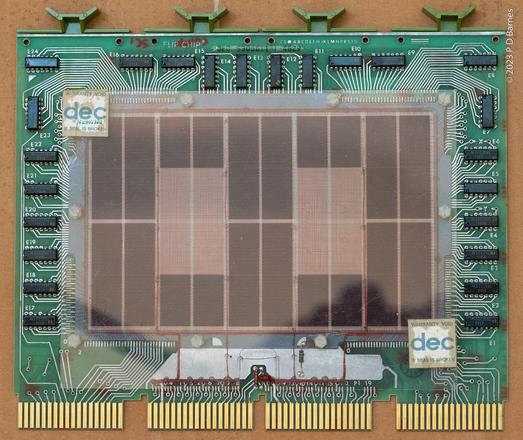64 bytes, more or less Something different for #MacroMonday, as you carry billions or trillions of bytes in your pockets, entire libraries and music catalogues... #CoreMemory, 1 core=1 bit. (DEC PDP-11 H214 8kx19 detail) #photography #history #technology #IT #EastCoastKin #PhotographersUnited
#corememory
MUDs and the ability to reload new server without dropping connections (a “hotboot”)…
https://boston.conman.org/2025/02/11.2
…reminded me of an old RSX-11M application from an aeon ago, running part of a state government.
The app was too big for the PDP-11 (a common problem, as 32KW wasn't all that much even then), so the app removed the operating system from the computer, and ran, well, standalone.
Yes, you could do that back then.
That all worked swimmingly until somebody pressed ^C control-C on their terminal session, and the terminal driver then trapped into, well, nothingness.
Since the app code was too big for the PDP-11 it was running on, that smaller PDP-11 was shut down, the bigger local PDP-11 was switched over and re-booted and the app code loaded, and the bigger PDP-11 was then powered down.
The operator then pulled the core memory out of the bigger PDP-11, walked it over to the smaller PDP-11 and plugged it into the backplane, toggled in the address of the app's main loop onto the front panel switches, and toggled “go”, and off the smaller PDP-11 went running its too-big app.
Yeah, you could do a simple form of app checkpoint-restart with core memory, given core was persistent. And yeah, a bigger PDP-11 would have been helpful.
(Yes, SC was a creative administrator of those PDP-11 boxes. Swapping core never would have occurred to me.)
@mavica_again @cstross @NF6X also lets be clear, @NanoRaptor does "Premium" #Shitpost|s or rather "#NextLevel #Memes" to the point that I'd not be surprised if she makes a #NeoFloppy / #Jaz / #Zip mashup and showcases a nonexistant "vintage" portable SSD with like old #ROM chips or #RAM chips...
- I mean, the only reason #ODD's and #HDD's ever got built is because #CoreMemory and other storage couldn't scale up faster.
But #WhatIf it did?
- plays Vsauce music
No collection is complete without a core memory module. In my case from a Saratov-2 computer manufactured in the USSR.
The individual rings are smaller than the head of a pin, amazing!
As soon as I have a macro lens for my camera, I will take new photos. Additionally I'll add something for scale...
For more information:
https://rusue.com/cemetery-of-soviet-computers/
https://www.curiousmarc.com/computing/core-memory
A Nibble Of Core Memory, In An SAO https://hackaday.com/2024/09/03/a-nibble-of-core-memory-in-an-sao/ #computerhacks #magneticcore #corememory #nibble #sao
Repórter Retro 105
https://retropolis.com.br/2024/07/31/reporter-retro-105/
#ReprterRetro #68000 #68010 #8BitShowAndTell #86Box #AdrianBlack #Apple1 #Arcade #Arduino #AtariPortfolio #backplane #BitnamicSoftware #Coco3 #CommodorePlus4 #Computerland #CoreMemory #CP500 #DidSomebodySayRetro #Emuladores #EPROM #FreeDOS #GameBoy #Intel80286 #Intel8088 #LaCoCoStrangiato #LGR #MarcusGarrett #microsoft #MSDOS #MSXTurboR #Odyssey #Oric #Oric1 #Plexus #RetroRelix #RetroRio #RioRetroGames #RMC #SAMCou
19 years ago today we rounded up 4 TVs, 4 OG Xboxes, a 4 port switch, and 14 friends for some #halo deathmatch. Trash-talking across the room is so much better than over a mic! Still probably the best party I’ve ever been to
In 1972, #core #memory was manufactured in #Dublin by the Irish subsidiary of US-headquartered Dataproducts, trading as "Data Products/Core Memories Ltd."
They made what they claimed was "...the world’s largest core stack, 131K x 80". Judging by the info in the caption, the latter number is the number of bits per word, so in eight-bit bytes, that's 1,310 kilobytes.
I can't imagine that business survived more than a couple more years. Soon the semiconductor manufacturers had set up shop in Ireland.
#vintage #computer #hardware #history #CoreMemory #OtherGeographies #Ireland
@futurebird you're doing classic #CoreMemory?
NOICE!
Here is a link (cued to the time where it starts) of the best and most clear explanation of how core memory works. Reading & writing a bit has many steps!
Now I want to know how modern memory works with a similar level of detail.
I always felt there was something poetic about how one must destroy this kind of memory in order to read it. Observation is never passive... to observe a system is to change it... #computer #memory #history #coreMemory #cs
https://youtu.be/AwsInQLmjXc?list=TLPQMTcxMjIwMjPAV2NFeK1Otg&t=160
Saving Apollo by Decoding Core Rope https://hackaday.com/2023/11/04/saving-apollo-by-decoding-core-rope/ #ApolloGuidanceComputer #Retrocomputing #Coreropememory #corememory #History #agc
@ana Wow, that page is super detailed. I remember reading about core memory in this IEEE Spectrum article: https://spectrum.ieee.org/the-vacuum-tubes-forgotten-rival
When I was in college here in Brazil, in the 1970s, I was told that US computer makers shipped the mag donuts to their BR subsidiary, where armies of women would thread them into core memories, peering through microscopes. Which would be exported back to the US, then imported again as computer parts.
I was also told that the women would have to change glasses several times in a few months, and then would be fired.
But it may have been just nationalist propaganda.
GLASNOST is a Computer That Makes Transparency A Priority https://hackaday.com/2023/07/17/glasnost-is-a-computer-that-makes-transparency-a-priority/ #computerhacks #corememory #vacuumtube #computer #glasnost #soviet #logic #gate
Wer schon immer mal Magnetkernspeicher selber fädeln wollte: Bittesehr, CoreKit64 existiert. 64 allerfeinste Kernspeicherbits. https://www.core64.io #vintagecomputing #retrocomputing #corememory
Happy with how my mounting / framing of this core memory module turned-out.
Beautiful as a historical display piece, and I wouldn't mind trying to connect it to an Arduino some day. Addressing memory to read/write one bit of data at a time looks simple but also cumbersome at the same time.
A trip down memory lane...
WARNING - severe geekiness ahead.
Not my favourite core plane, that would be a 4k x 12 from a PDP/8L, but I don't have that one, alas. You could *see* the cores on that one.
8k (16 bit plus parity) memory from a PDP-11 (H214).
#photography #macro #computers #hardware #memory #CoreMemory #ferrite #pdp11
And you might ask yourself "What if this is heaven?"
@LotSixteen yup, called it that too. Mind you, loading programs from a cassette tape was better than loading a stack of optical cards…
#TRS80 #Wang2200 #CoreMemory
